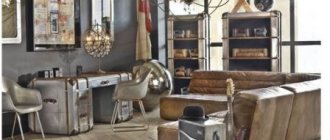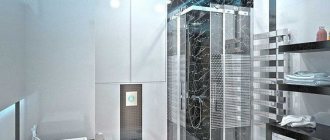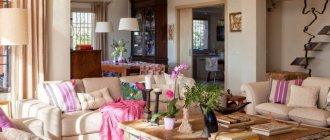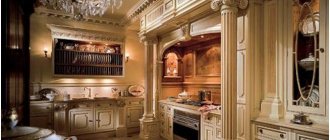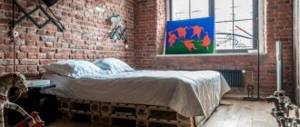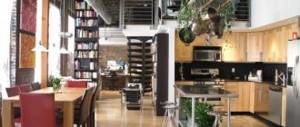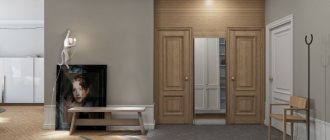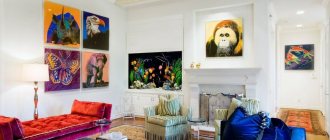general characteristics
The Romanesque style is characterized by massiveness , severity and lack of frills, as well as the severity of its appearance.
Romanesque architecture is famous for its ponderous castles and temples, rather reminiscent of an impregnable fortress in the spirit of the Middle Ages. The Romanesque style is dominated by powerful walls, massive semicircular doors, thick columns, cross or barrel vaults, semicircular or round windows. The floor is marble, patterned tiles. Mirrors – chiffon bronze. The walls are Venetian plaster. Painting (religious motifs). The interior of the Romanesque style also has more power than grace. All elements of the interior create a feeling of simplicity and heaviness, with almost no decorative decorations in the rooms. Romanesque buildings are characterized by powerful walls and columns due to heavy vaults. The main motif of the interior is semicircular arches. In general, the rational simplicity of the structures is noticeable, but the feeling of the heaviness of the Romanesque cathedral is depressing.
Essential elements
The main elements of the Romanesque style are: relief plane, conciseness and simplicity; colors: brown, red, green, white, gray, black; barrel, semicircular, straight, horizontal and vertical lines; rectangular and cylindrical shapes; semicircular frieze, repeating geometric or floral pattern; halls with exposed ceiling beams and center supports; stone, massive, thick-walled structures; castle and knightly themes - torches, armor, coats of arms, battles, weapons.
Integration of Romanesque style details into the design of a modern apartment
You are unlikely to be able to recreate a real knight's castle from the Middle Ages in a modern apartment, but it is quite possible to introduce some elements of the Romanesque style into your home. The main thing is to maintain a balance between exoticism and comfort and tastefully incorporate some of the features inherent in castle halls into the home interior.
Bedroom
The central place in any bedroom is occupied by the bed, and in this modern apartments fully correspond to medieval ideas. The bed in the interior of an apartment in the Romanesque style should be large, massive and reliable, preferably with a wooden frame and a cotton canopy, as in the photo below. At the headboard you can put an imitation of an antique chest, which will replace the banquette. The background for such furniture will be a colorful oriental rug on a wooden panel floor and walls plastered or painted in beige, cream, or a neutral light shade. Missing lancet windows can be masked with heavy curtains or decorated with stained glass film.
Kitchen and dining room
It’s difficult to “fit” a modern kitchen into the castle style, but it’s worth a try. Ceramic tiles that imitate stone are suitable for finishing the floor and walls, and kitchen facades should be made of wood in a deliberately rough, rustic style. Faux stone countertops, wooden utensils, copper and ceramic dishes on open shelves and hooks will complete the picture. Remember that the amount of textiles in the interior of a Romanesque style apartment should be minimal, and all equipment will be hidden behind the facades. A large wooden table with massive chairs and a hood imitating a fireplace portal will fit well into the interior of an apartment with a Romanesque kitchen-dining room.
Living room in a Romanesque apartment interior
A living room in a Romanesque style should not have upholstered furniture (in those distant times, sofas simply did not exist), but for a modern apartment such a requirement is impossible. Try to find a compromise by covering the armchairs and sofa with tapestry covers in neutral colors, decorating the floor with an oriental rug, and the walls with paintings with knightly scenes. On the shelves you can place collections of antique dishes, cups and mugs, and on the wall - daggers.
Story
The Romanesque style (from the Latin romanus - Roman) in art arose around 800, after the fall of the Roman Empire and the completion of the great migration of peoples. The source for the emergence of a new style was the Byzantine style, the art of the peoples of northern Europe and early Christian forms. It developed in Western European art of the 10th-12th centuries. The Romanesque style absorbed numerous elements of early Christian art, Merovingian art, the culture of the “Carolingian Renaissance” (and, in addition, the art of antiquity, the era of migration of peoples, Byzantium and the Muslim Middle East). In contrast to the trends in medieval art that preceded it, which were local in nature, the Romanesque style was the first artistic system of the Middle Ages, which covered (despite the huge variety of local schools caused by feudal fragmentation) most European countries.
The Romanesque artistic style, which dominated Western Europe (and also affected some countries of Eastern Europe) in the 10th-12th centuries. (in a number of places - in the 13th century), one of the most important stages in the development of medieval European art.
The entire aesthetics of the Renaissance originates from the art of the Middle Ages. The aesthetics of the Medieval era is distinguished by a high degree of theology. Thus, the aesthetic concepts of the Middle Ages have their beginning and completion in God. It should also be noted that the early Romanesque style shows the influence of the Roman thinker and philosopher Avral Augustine, who lived from 354 to 430 AD. Aurelius Augustine had an excellent sense of beauty, was a sensual, expressive person, and at the same time, being a Christian, he understood that divine beauty is far superior to visible, earthly beauty. It was this thinker who turned his attention to how the ugly and the beautiful correlate in the world. For Augustine, the form of beauty was the unity in which a room was maintained. The Romanesque style originated in the Middle Ages, at the beginning of the 10th century, and lasted approximately until the 12th century. The Romanesque style was most widespread in Germany and France.
The term Romanesque style itself appeared at the beginning of the 19th century, when a connection was established between the architecture of the 11th and 12th centuries with ancient Roman architecture, partly through the use of semicircular arches and vaults. The term, although conventional, has come into widespread use. The development of the Christian Church on the ruins of the Roman Empire served to popularize the Romanesque style. The monastic brethren moved to all corners of Europe, erecting churches and monasteries in the Romanesque style. Among the monks there were also artists and craftsmen who, with their work, spread this style throughout Europe.
The buildings, considered examples of architecture of this period, have the appearance of fortresses: a castle-fortress and a temple-fortress. The Romanesque style is distinguished by thick massive walls, narrow loophole windows and high towers. During periods of civil strife, Romanesque churches could withstand siege and serve as refuge during war. Knight's castles were built on elevated places, convenient for protection from the enemy, and then surrounded by high walls and a moat.
The main buildings during this period were the temple-fortress and the castle-fortress. The main element of the composition of a monastery or castle is the tower - the donjon. Around it were the rest of the buildings, made up of simple geometric shapes - cubes, prisms, cylinders.
The most famous buildings in the Romanesque style are: Libmurg Cathedral in Germany; Pisa Cathedral and partly the famous Leaning Tower of Pisa in Italy; Kaiser Cathedrals in Speyer, Worms and Mainz in Germany; Romanesque churches in Val de Boi; Church of St. Allegedly in Regensburg. The godly social order, as the church imagined it, was not aimed at the development of style. For approximately 400 years of existence, the Romanesque style received neither development nor a leap in technology in production.
Household items , fabrics and furniture for a society that was based on subsistence farming were made only for the needs of this household, giving absolutely nothing to the development of the style. However, with the beginning of the Crusades, progress began. Knights and pilgrims, having visited the Holy Lands, saw all the luxury of the east and wanted to partially reproduce it in their homeland. This gave impetus to the development of the Romanesque style, which later degenerated into the Gothic style.
Features of the Romanesque style
The main achievement of the construction and engineering art of the Romanesque era was the appearance of vaulted structures. A traditional Romanesque basilica is most often a three-nave (sometimes five-nave) elongated room, crossed by a transverse nave-transept or a pair of them. The central nave, which was always wider and higher than the side naves, was covered with a massive vault of wedge-shaped stones. In early buildings, a cylindrical vault was used, which pressed with all its weight on the supports; it required massive thick walls and could only be built in rooms with a small span.
Basilica of Notre Dame la Grand in Poitiers
Hence the small volumes of interior spaces characteristic of the early Romanesque style, the small number and modest size of windows, which is why early Romanesque churches are quite dark. Subsequently, the middle naves began to be made higher, the vaults began to acquire pointed outlines, and an additional row of windows appeared under them. Pointed arches are more characteristic of the Gothic style, and in buildings of the Romanesque period they are adjacent to rounded arches. We recommend taking a look at Notre-Dame La Grande in Poitiers, we have already talked about it.
St. Michael's Church (Michaeliskirche), Hildesheim, Germany
Architectural structures of the Romanesque era are characterized by massiveness and regular geometric shapes (parallelepiped, cone, pyramid, cylinder). Smooth massive walls are combined with stepped recessed portals, narrow openings and windows. The columns are strictly cylindrical in shape; the decoration of the capitals often uses classic antique acanthus ornaments.
Church of Santa Maria (Colegiata de Santa Maria do Campo), A Coruña, Spain
Traits and Features
The creators of the Romanesque style - sculptors, architects, painters - wanted one thing: the embodiment of beauty in their creations. The era of this style gives rise to a special feeling of touching an everlasting history, a sense of the significance of the Christian world. The interiors and architectural buildings of that time reveal warmth and harmony, smooth arches and majestically calm decor.
Walls in Romanesque style: imitation stone - castle walls. Also in the Romanesque style, you can use plain plaster in gray, tan, or beige colors. The bathroom/toilet has stone wall tiles. The feeling of gloom can be diluted with inserts made of dark wood, frescoes and even stained glass windows made of colored pieces of glass. You can also create a decorative window of a semicircular elongated shape in the wall, or in the form of a fresco, adding a sense of fortress.
The ceiling is in the Romanesque style: often as a continuation of the wall in the form of vaults. The color of the Romanesque ceiling matches the color of the wall. To liven things up, you can use wood inserts, but as rough supports rather than carved decorations.
Romanesque style flooring: a distinctive feature of this style is the floor covering with mosaics, mainly made of natural stone. It is possible to use large-sized ceramic tiles, again imitating stone. Parquet in the Romanesque interior style is rarely used. When using it, try to choose an array of dark wood that matches the inserts on the walls with an antique effect.
Romanesque style furniture: Simple and even primitive. The most common: rough tables, stools with three and four legs, benches. Seating furniture was made of planks, carvings and forged iron parts were added. The backs of the chairs and the chairs themselves are quite high, their size indicated nobility of origin. Romanesque style furniture was often painted in bright colors. The materials used to make furniture in the Romanesque style were spruce, cedar and oak.
The main mistake when creating a Romanesque interior style is the use of upholstered furniture . In those years it was not available, and the furniture was covered with paint and often covered with canvas, then a layer of plaster was applied and the entire structure was subsequently painted. The only possible deviation from the rules is the bed. In the Romanesque period, an important role was played by beds, whose design resembled frames on carved legs. Canopies can be hung as an elegant addition to the bed, although at that time they were used more as protection from the cold.
The first place among household items in the Romanesque style belongs to the chest , which was used as a table, chair and even a bed, but mainly as a place to store household items. Later, chests with legs and doors began to appear in temples, which were the original ancestors of modern cabinets. However, the use of cabinets in any form is considered unacceptable. To create a special touch in the Romanesque style of the interior, get a wooden chest with wrought iron inserts.
The Romanesque style is characterized by the simplicity of the interior and the materials used in it, as well as small decorative details. In the Romanesque style, the concept of curtains and curtains first appeared. This is due to the fact that spaces during antiquity were windowless, and buildings during the early Christian era had small windows made of colored glass, so these interiors did not require curtains. Despite the fact that the Romanesque architecture has a heavy castle character and there are not many windows there either. It contains semi- and round windows, which began to be decorated with transverse curtains. The semicircle was a typical Romanesque window shape, so the curtain rod or cornice of this era was round. At the same time, a carved zigzag line decorated the simple architecture of the interior. The cornice or pole was made of dark wood, just like the furniture. In addition to cross curtains in the Romanesque style interior, there were carpets and heavy draperies that served as protection from the cold.
Decor items in the Romanesque style: paintings, tapestries, and wall lamps in the form of candles are used to decorate walls in the Romanesque style. When choosing a chandelier, focus on its massiveness (heavy and forged metal, chains, etc.). The predominant type of sculpture was relief. Relief images, large vases with drawings, tapagrams (small terracotta figurines) complement the painted coffered ceiling. You can complement the interior with items of knightly heritage: armor, helmet, sword. A special touch is the presence of a fireplace.
Romanesque style is a style of revival of the traditions of Ancient Rome. The style is characterized by heavy, closed, massive forms, staticity, smooth arches and majestically calm decor. A characteristic feature of the architecture is the monumentality of defensive fortifications - a stone vault, thick walls cut through by small windows. The decor is dominated by massive elements, only the minimum necessary for life - beds, mostly with canopies, rough wooden chairs with a high back, chests fastened with metal plates. Comfort was achieved through finishing with fabrics and carpets. A mandatory element is a fireplace with a hanging hood.
Interiors in Romanesque style
In the interiors of Romanesque churches, there is a clear zoning of space with the help of podiums, arches, galleries, and the walls of the central naves are most often made three-tiered. The first tier consists of semicircular arches separating the central and side naves; above the arches there are walls with decorative decoration, paintings, a low arcade (triforium), the upper tier is windows. Romanesque art and decoration is a rough but poignant expression. Everywhere except Italy, where mosaic decoration was often used, preference was given to frescoes. Romanesque interiors were also decorated with small stained glass windows, sculptures, and paintings.
Interior of the Cathedral (Kaiser- und Mariendom), Speyer, Germany
Interior of the Cathedral in Worms
The works of art of that era are characterized by rather realistic types with slightly disproportionate figures and exaggerated gestures; the artists’ inclination towards fantastic, gloomy plots and images is obvious. The painting is characterized by a striking variety of scales: the main attention was given to the material weight of the human body, but the space in which it is located was devoid of depth. Ornamental art was distinguished by a huge wealth of motifs, the sources for which were Byzantium, Iran, and the Far East.
"Window"
One of the most recognizable features of the Romanesque style in the interior is arches, pointed, arched, symbolizing the exaltation of the human soul, the desire to connect with eternity. Such windows were often split into several parts, inside which independent figures and patterns were created, which later developed in Gothic architecture.
It was thanks to the masters of the Romanesque era that the world learned about the art of stained glass, which later became famous for the classical Italian style in the interior. Colored glass was used not only to directly decorate openings, but also to create visual illusions, when the room seemed immersed in either a gray or purple haze.
"Doors"
The Romanesque style in the interior does not imply the presence of entrance doors in the usual sense. The entrance to the room was designed in the form of a portal, outlined by massive columns or lined with simple bricks. And if for public spaces this is still an acceptable option, then in residential buildings designers strive to achieve a compromise between authenticity and comfort, which is typical for the American style. Look at the photo below - the shape of the passage remains unchanged, but it is decorated with light draped curtains.
